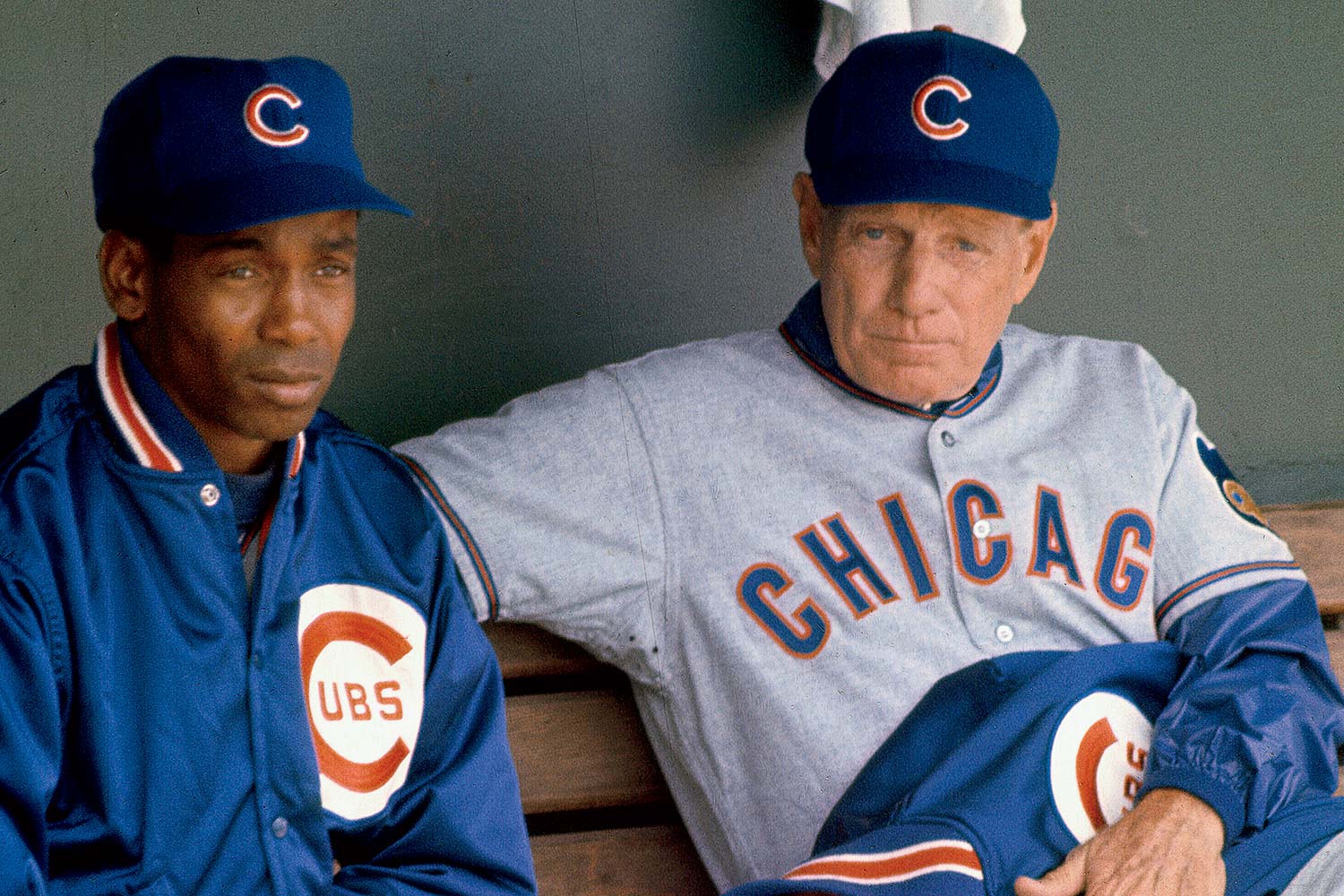Ernie Banks was as much a symbol of the Cubs franchise as a baseball player, but his perpetually sunny personality masked a more complicated man. Journalist Ron Rapoport first explored the depths of Mr. Cub in a 2015 piece for Chicago. He’s expanded on that in his book Let’s Play Two (March 26, Hachette Books). Here’s what you’ll learn.
1 Banks’s upbeat persona was carefully constructed. The naturally reticent ballplayer learned early that if he charmed people, he wouldn’t have to reveal anything. During the Cubs’ road trips, he was virtually invisible. “You just saw him at the ballpark,” former Cubs pitcher Rich Nye tells Rapoport. “I don’t remember him even taking the team bus. I think he took a cab most of the time.”
2 Except for two years in the army, he had virtually no interaction with white people until he joined the Cubs at age 22. He grew up in segregated Dallas and began his baseball career with the Kansas City Monarchs of the Negro Leagues. But Banks avoided taking a stance on race. Many criticized him for not participating in the civil rights movement, including Hank Aaron, who said he was frustrated he couldn’t get Banks and Willie Mays to speak out.
3 The Cubs considered trading their star during his prime. Over the years, they reportedly received offers from the Cardinals (for cash), Dodgers (potentially for a young Sandy Koufax and Tommy Davis), Braves (for a late-career Warren Spahn, Joe Adcock, and others), Tigers, and Red Sox.
4 Banks’s relationship with Hall of Fame manager Leo Durocher was toxic. Durocher mocked Banks in public and humiliated him in the clubhouse. Each spring toward the end of Banks’s career, Durocher hoped to force the aging player into retirement, trotting out a succession of potential replacements at first base, before Banks’s talent shone through and he won his job back.
5 Living alone in Chicago’s Trump Tower at the end of his life, Banks was dependent on his friend and caretaker, Regina Rice, and a few other confidants. The one place he always felt at peace was Wrigley Field. When he was at the ballpark, the dementia he developed in his final months was virtually undetectable.



